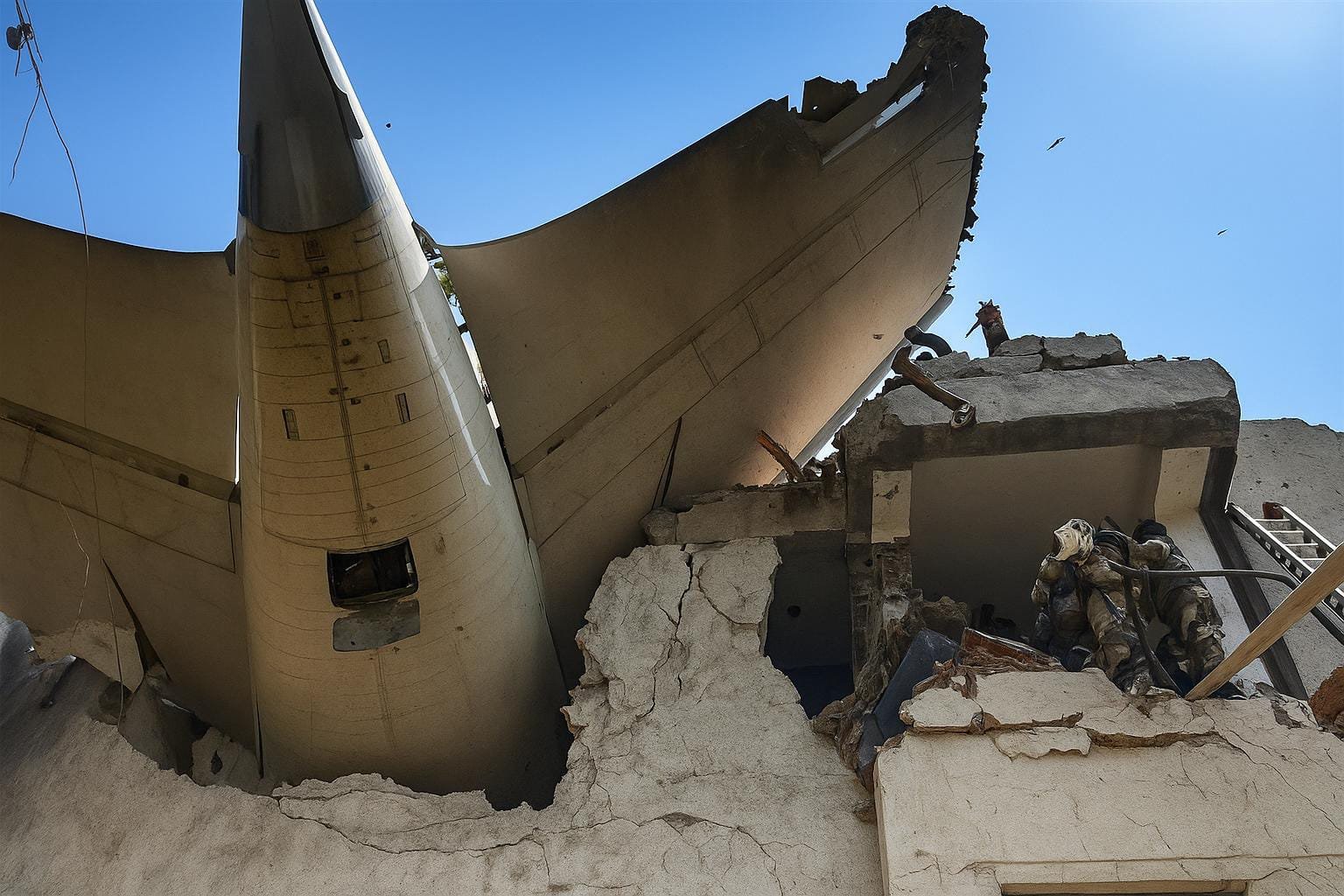
The June 12 crash of Air India’s Boeing 787 Dreamliner shortly after take off from Ahmedabad’s Sardar Vallabhbhai Patel International Airport has shaken the country. Initial findings point toward a technical failure—possibly involving flap configuration, engine thrust issues, or landing gear malfunction. But as aviation investigators pore over black box data and maintenance records, another unsettling question lingers: could climate change have quietly amplified the conditions that made this tragedy more likely?
This is not a question born of speculation. Aviation experts, climate scientists, and aerospace engineers have been warning for years that the warming of our atmosphere is changing the rules of flight. Ahmedabad, where the mercury had touched 45°C on the day of the crash, might now serve as a case study of how subtle shifts in temperature, air density, and wind behaviour can push aircraft performance to its edge.
Take off Under a Sweltering Sun
At the heart of this issue lies a fundamental truth of aerodynamics: hot air is thin air. As temperatures rise, air density drops, weakening the amount of lift a wing can generate and reducing engine performance. Under extreme heat, planes require longer runways, lighter loads, and precise configuration to achieve a safe climb.
Ahmedabad, during its summer peaks, often sees ambient temperatures climb above 43°C. On June 12, the airstrip baked under intense midday heat. In such conditions, any deviation—be it in flap settings, engine calibration, or wind shift—can compound quickly. Aviation experts note that high-altitude performance margins shrink significantly in hot-and-high airports like Ahmedabad, making heat a silent but potent stressor.
According to NASA and the IPCC, India’s average surface temperature has increased by 0.7°C over the past century, with cities like Ahmedabad seeing higher spikes due to urban heat island effects. A 2019 study by the Indian Institute of Tropical Meteorology predicted that the western region, including Gujarat, will see more than 30 extreme heat days annually by 2030.
Turbulent Skies and Jet Stream Disruption
While the crash occurred shortly after take off, meteorological conditions at higher altitudes are also evolving. Researchers at the University of Reading have found that clear-air turbulence—unpredictable mid-air bumps caused by changing wind patterns in the jet stream—is increasing globally due to climate change.
Though turbulence was not directly reported in the Ahmedabad crash, shifting wind layers and low-altitude gusts caused by heat convection may have contributed to the aircraft’s struggle to gain altitude. The pre-monsoon months, particularly in western India, are now marked by erratic wind patterns, microbursts, and sudden shear zones. These phenomena can surprise even experienced pilots, especially during take off or landing.
Aviation meteorologist Dr. V. S. Ramachandran notes, “We are seeing more low-level wind shear near airports, which was rare a decade ago. The localised gusts during high-heat days can turn a safe departure into a high-risk maneuver.”
The Science of Margins: Why Every Detail Counts
Flight safety often relies not on absolute safety, but on generous margins—extra lift, extra thrust, and time to react. When climate variability eats into those margins, even minor faults can become fatal. In aircraft systems, where performance is tightly calibrated for normal atmospheric conditions, any shift in those conditions calls for recalibration.
The crash of Air France 447 in 2009—triggered by pitot tube icing due to high-altitude moisture—is a chilling reminder of how unanticipated environmental factors can disorient even the most advanced aircraft. Though there is no evidence yet of sensor failure in the Ahmedabad crash, the broader trend of unseasonal humidity and atmospheric instability in India must not be ignored.
A 2022 DGCA internal report admitted that India's aviation safety manuals still lean heavily on historical weather data, with little adaptation for future climate projections. That creates a blind spot. Aircraft performance algorithms, emergency checklists, and runway design standards all depend on what the climate used to be, not what it is becoming.
Could This Have Been Avoided?
Retired Captain Alok Singh, who has flown Boeing 787s for over a decade, says that the aircraft is known for its reliability. “But in this case, if both engines failed to produce sufficient thrust, and flap deployment wasn’t optimal, and the air was extremely hot and thin—then what you have is a chain of stress points, each feeding the next.”
No one yet knows if climate change was a direct cause. But the conditions it fosters—heat-induced performance loss, unpredictable wind shifts, changing atmospheric moisture—are now credible aviation hazards.
Air India, following the crash, has grounded certain Dreamliner models and ordered operational reviews. The Directorate General of Civil Aviation (DGCA) has issued directives for real-time temperature monitoring, performance reassessment at take off, and review of runway length adequacy in hot zones like Ahmedabad, Jaipur, and Lucknow.
Manuals to Mandates for Aviation
India’s aviation sector is one of the fastest growing in the world. With expanding air routes and rising temperatures, the risk of weather-amplified mechanical failures is no longer a distant threat.
Policy recommendations from the Ministry of Civil Aviation’s 2023 climate risk report include:
- Retrofitting aircraft with advanced wind shear detection tools.
- Integrating high-resolution climate forecasting into flight planning.
- Revising payload norms for take off during extreme heat days.
- Coordinating with IMD for localized weather monitoring at major airports.
Many of these remain on paper.
The Invisible Factor
The Ahmedabad crash may ultimately be attributed to technical malfunction. But it would be shortsighted to dismiss the role of climate as merely circumstantial. Our skies are not the same as they were 20 years ago. Every extra degree of heat, every subtle shift in wind, and every instance of atmospheric instability changes the odds in flight operations.
If we fail to update how we fly in response to how the skies are changing, the next tragedy might not be a coincidence—it might be a consequence.





















